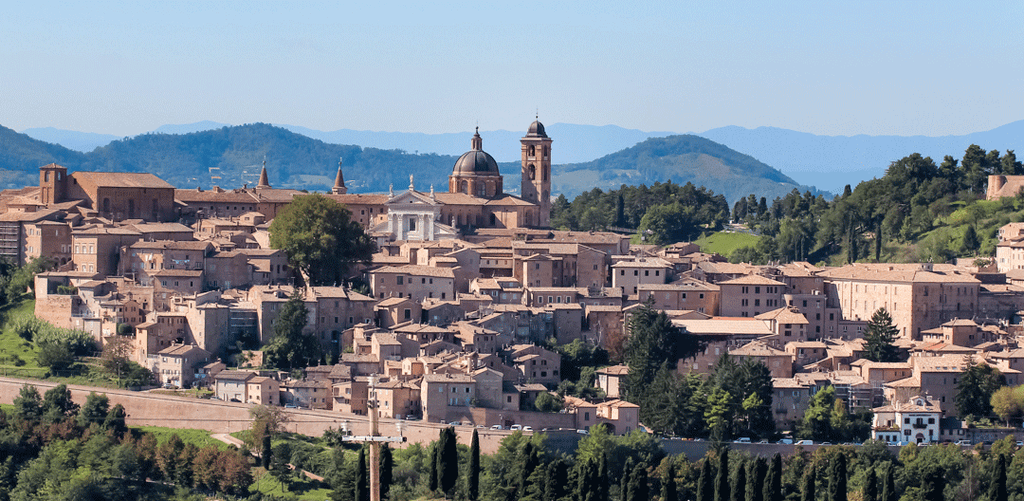Creating new things has been a passion for me since I began making wooden toys as a child at home in Urbino, Italy. It was a natural choice for me to study industrial design at University in San Marino where I developed an interest in ceramics and began to discover the possibilities of combining clay with other materials and using specialist firing techniques to produce contemporary ceramic art.
While a student at university I practiced daily and realized a number of projects utilising clay as my raw material. One specific project was a vocal resonator that was exhibited on the stand of Casabella in the Salone del mobile Milano expo.
I ve continued my carriere in design and on 2014 I ve graduated in Product Design in Venice, one of my favorite city to live.
Studying under the master potter Roberto Aiudi I began exploring experimental techniques and built my own Raku Kiln to refine my Raku firing technique that produces a distinctive cracking effect in the final glaze. The spirt of Raku embraces the 4 elements: earth, fire, water and air and allows you to create objects as unique as nature itself creates.

I am continually refining and developing my skills in Raku, Naked Raku, which allows you to create amazing patterns; Raku Dolce, the traditional coral clay method from Arezzo; Saggar Firing, using a container to protect the piece during firing; Obvara Firing or Baltic Raku, that uses flour and yeast during firing; Horse Hair decoration; and Stoneware.

I have a fully equipped studio with Potter’s wheel, electric kiln, the Raku Kiln and plaster models, in Urbino, Marche, in the heart of a beautiful coutryside.
Each piece I create is unique. The fusion of Italian design influences and traditional ceramic techniques adapted for contemporary tastes results in highly individual items for your visual enjoyment. I produce a wide range of pieces from functional items such vases, lamps and bowls to art ceramics and sculpture. My sculpted face impression masks have been very well received and much talked about at ceramic exhibitions and shows.
I am able to accept commissions, so please visit my collections to see what I can produce and you might want to have a similar piece produced especially for you. Maybe you want something quite different – I love to experiment and will talk through the possibilities with you.
I regularly exhibit my work so if you want to come a have a look and discuss something you would like made, please see my events list on my website or contact me direct; I love to talk about my work!
I am more than happy to share my experience with other ceramicists. I will run workshops for small groups or one-to-one here in Urbino.
Just let me know which techniques you are interested in working with.
URBINO

Urbino is the town where I was born and where my ceramic studio is based.
With its Renaissance character, Urbino earned its place on the UNESCO World Heritage List in 1998.
Urbino is characterised by its unique and marvellous hills. It had been one of the first cultural and economic towns since the 16th century and focal point for many artists.
It is thanks to Federico da Montefeltro's contribution that this town obtained monumental and artistic superiority.
Walking around the narrow streets we can find many attractions such as: the former Convent of Santa Chiara, the Church of San Domenico, the Dukes' Mausoleum inside the Church of San Bernardino, Palazzo Boghi, and the majestic Ducal Palace, where Urbino's treasures are kept, and today the home of The Marche's National Gallery.
The Ducal Palace is the symbol of Urbino. Many masters were involved in its construction. The Duke was inviting the most famous artists, poets, scholars and architects of the time to join him at his residence.
Visiting The Marche's National Gallery you can find some of the most incredible masterpieces such as Della Francesca's Flagellation of Christ, The Madonna of Senigallia, Raffaello's The Mute Woman, Giusto di Gand's Communion of the Apostles and Paolo Uccello's Miracle of the Host.
For the ceramics' fans, I also mention the ceramic collection at the second floor of the Gallery that contains many Renaissance's majolica.
Connected to the Palace via a spiral ramp is the Data that represented the Duke's horse stables.
Another interesting places to visit are The Oratory of St. Joseph and the Oratory of St. John, The Albornoz Fortress and Raphael's House.
When you arrive at the Fortress there is a beautiful view of the town (many google's pictures reflect this perspective). By stopping here, you can appreciate the unique architecture of the town, the Dukes' Mausoleum in the background and the hilly landscape on the surrounding.
Urbino is a great town for walking or just sitting and enjoying the peaceful historical atmosphere. There are many cafés where you can relax with a nice cup of coffee or an aperitif.
Curiosities:
There are many culinary delights you should try such as: Crescia sfogliata, Casciotta d'Urbino, Passatelli and the Rosted Rabbit.
The Kite Fest of Urbino takes place annually in September and it is a very unique event you can't miss.
Urbino plays Jazz is a festival organised in August by the Urbino Jazz Club association where young talents and established artists exhibit around the town.
Urbino is also hosting one of the eldest universities of Italy called Carlo Bo, founded in 1506. The town counts many students who come from all over the Italian territory and the rest of the world.
In the town, there is also a famous Academy of Fine Arts, and Urbino is known as the “Capital of Books” for its Institute of Decoration and Illustration (founded in the mid-20th Century).
I hope you enjoyed this descriptive section and to see you at my studio!

